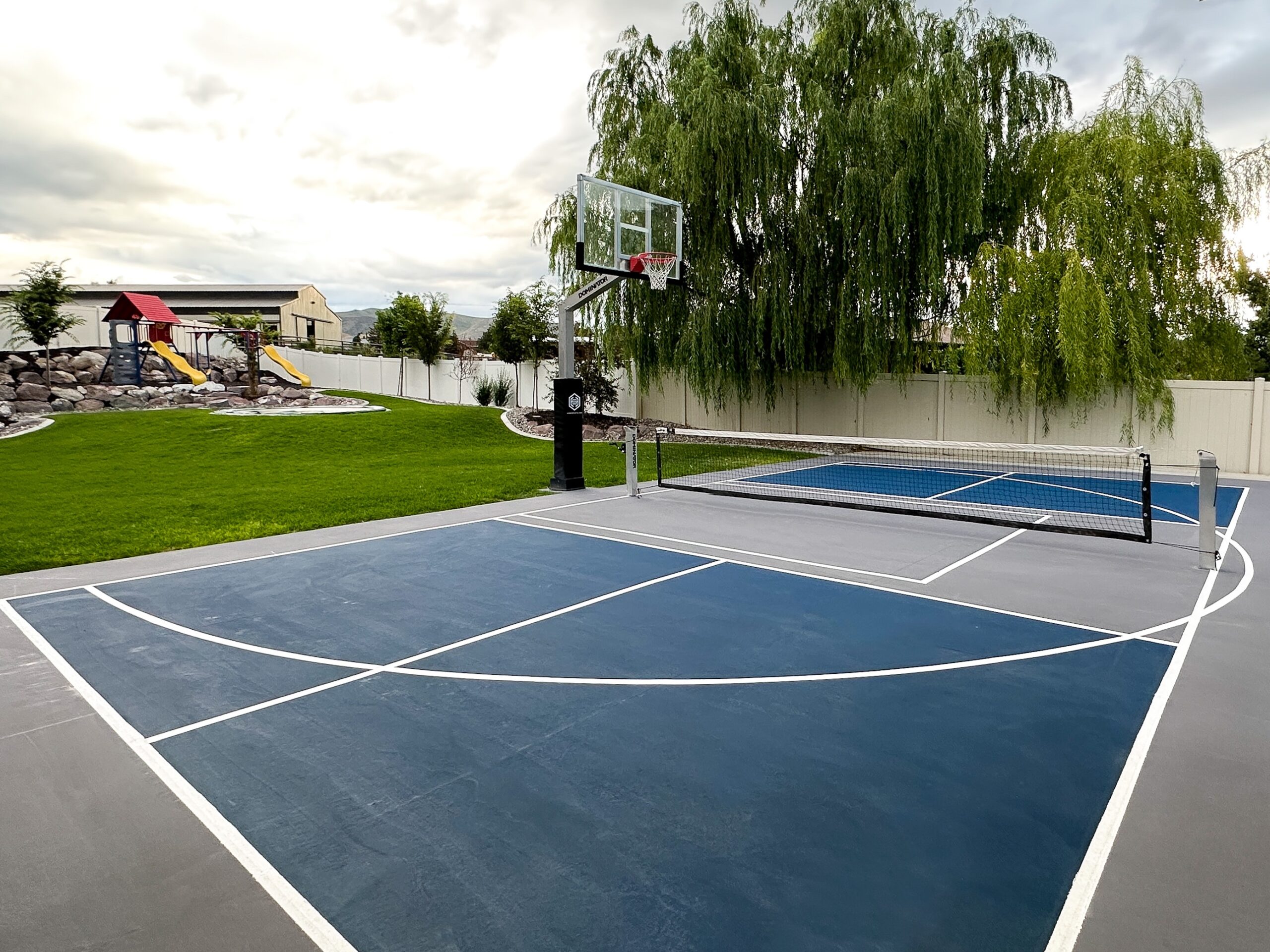How Illinois and Midwest are Blazing A Trail in Pickleball Courts Layout & Building
How Illinois and Midwest are Blazing A Trail in Pickleball Courts Layout & Building
Blog Article
The Necessary Providers Needed for Building and Maintaining High-Quality Pickleball Judiciaries
The building and maintenance of high-grade pickleball courts pivot on an array of necessary services that make certain ideal efficiency and player safety. Key considerations consist of the choice of suitable surface materials, adherence to standardized dimensions, and the application of reliable drain systems.

Selecting the Right Surface Area Materials
Selecting the ideal surface materials for pickleball courts is vital to making certain optimal playability and security. The choice of surface area directly affects video game dynamics, gamer comfort, and injury prevention. Typical materials include asphalt, concrete, and specialized acrylic layers, each offering unique benefits and factors to consider.
Asphalt is usually favored for its cost-effectiveness and resilience; nevertheless, it calls for regular upkeep to avoid fracturing and surface degradation. Concrete offers a robust and long-lasting alternative, giving a smooth having fun surface that can hold up against hefty usage. It may demand added treatment to enhance traction and decrease slipperiness.
Polymer coverings have gained appeal as a result of their capacity to improve performance qualities, such as shock absorption and grip, while likewise allowing for customization in color and layout. These finishes can be applied over existing surfaces, making them a functional choice for court upgrades.
Eventually, the choice of surface product should straighten with the meant use the court, spending plan restrictions, and local environment problems. Consulting with professionals that focus on sports center construction can provide beneficial insights, ensuring that the chosen materials satisfy both player needs and security standards.
Correct Court Dimensions and Format

The net height is evaluated 36 inches at the sidelines and 34 inches in the center, which is vital for maintaining the stability of the video game. In addition, the court should be bordered by at the very least 3 feet of clear room on all sides, allowing for risk-free movement and preventing crashes with bordering obstacles.
Ideally, courts need to be aligned north-south to reduce the impact of sun glare on players. By sticking to these requirements, center supervisors can make certain that their pickleball courts fulfill the essential criteria for both entertainment and professional play.
Effective Water Drainage Solutions
Reliable water drainage options are crucial for maintaining the quality and playability of pickleball courts, specifically after inclement weather. Illinois and midwest. Correct water drainage systems stop water build-up on the court surface area, which can cause surface area degradation, mold development, and safety risks during play
To attain efficient drainage, it is necessary to develop the court with a mild slope, preferably around 1-2% away from the. Additionally, including a well-designed drain system, such as perforated pipes or French drains, can additionally enhance water management.
Permeable surfaces, like see here certain types of asphalt or specialized sports surface areas, permit water to penetrate, reducing the risk of standing water. By executing these reliable water drainage solutions, center supervisors can make sure that pickleball courts continue to be usable and safe, thus improving the general experience for players and preserving the durability of the investment.
Routine Maintenance Practices
While the pleasure of pickleball is commonly connected to the high quality of the court, routine maintenance techniques are important for protecting its condition and ensuring a secure playing environment. The initial step in upkeep entails regular evaluations to determine any type of cracks, surface area wear, or particles that might impact gameplay.
Cleaning the court on a regular basis is vital, as this stops the build-up of dirt, leaves, and various other materials that can deteriorate the surface and develop dangers. A pressure washing machine or a mop can efficiently remove debris while ensuring that the court surface remains intact.
In addition, regular resurfacing is needed to maintain the court's having fun qualities and prolong its lifespan. This may entail using a new layer of acrylic or sealer to safeguard versus wetness and UV damages.
Additionally, preserving the bordering areas, such as fencings and internet, adds to the general safety and security and visual appeals of the center. Establishing an upkeep schedule that includes these techniques will certainly not only boost the playing experience yet also secure against expensive repairs in the see this website lengthy run. Regular interest to these facets ensures that pickleball courts stay a welcoming and risk-free setting for players of all skill degrees.
Lights and Ease Of Access Factors To Consider
Proper illumination and availability factors to consider are crucial components in the layout and upkeep of pickleball courts. The positioning of components need to be tactically planned to avoid shadows and ensure clear visibility of the court boundaries and web.
Accessibility is just as vital to advertise inclusivity. Courts must conform with the Americans with Disabilities Act (ADA) guidelines, guaranteeing that they are easily accessible for people with movement disabilities. This consists of giving ramps, proper signage, and designated seats locations for spectators (Illinois and midwest). Additionally, implementing a smooth surface area and guaranteeing that the surrounding locations are devoid of challenges can help with better accessibility.
Including both lighting and access considerations not just enhances the overall individual experience but likewise underscores the dedication to developing an Recommended Site inclusive and welcoming environment for all players. By focusing on these elements, centers can foster a lively pickleball area that attracts gamers of numerous skill degrees and backgrounds.

Conclusion
In verdict, the establishment and maintenance of high-grade pickleball courts demand a comprehensive technique that includes picking suitable surface products, sticking to conventional measurements, and executing reliable water drainage systems. Regular maintenance and examinations are crucial for durability, while ample lights and ease of access functions advertise a secure and comprehensive environment for players. Jointly, these important services not only improve the playability and convenience of the courts yet additionally add considerably to injury avoidance and general satisfaction of users.
Report this page